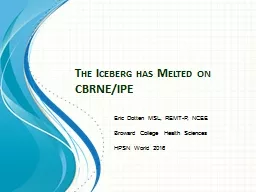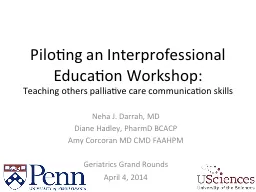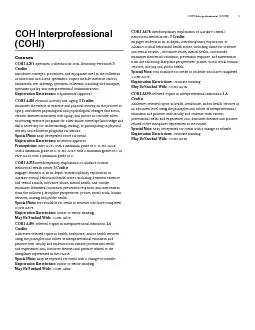PPT-Where Does Interprofessional Education (IPE) Fit Into Your Program Curriculum?
Author : kittie-lecroy | Published Date : 2018-03-07
Sandra Banas Ruth Ballweg Program Directors 101 Objectives Define interprofessional education Describe the concept interprofessional team based care
Presentation Embed Code
Download Presentation
Download Presentation The PPT/PDF document "Where Does Interprofessional Education (..." is the property of its rightful owner. Permission is granted to download and print the materials on this website for personal, non-commercial use only, and to display it on your personal computer provided you do not modify the materials and that you retain all copyright notices contained in the materials. By downloading content from our website, you accept the terms of this agreement.
Where Does Interprofessional Education (IPE) Fit Into Your Program Curriculum?: Transcript
Download Rules Of Document
"Where Does Interprofessional Education (IPE) Fit Into Your Program Curriculum?"The content belongs to its owner. You may download and print it for personal use, without modification, and keep all copyright notices. By downloading, you agree to these terms.
Related Documents














